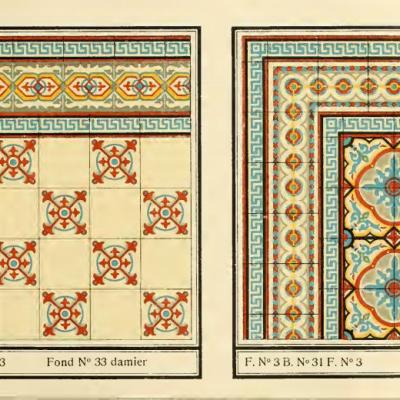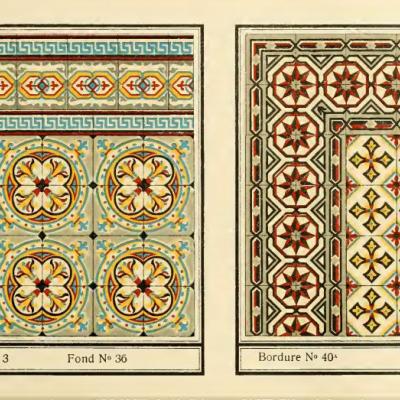A small 4m2 / 43 sq ft. antique St Remy Belgian floor
Dating from the early 20th century, a ceramic encaustic Belgian floor consisting of a principal 15cm / 5.9 inches square field tile and a same-size border for which all four border corner tiles are available.
Totalling 4m2 / 43 sq ft. in surface, there are 119 field tiles and 57 large border tiles plus 4 border corners, providing for a linear length of 9.2 linear metres / 30 linear feet.
The tiles are reverse stamped PCSR having been produced by Societe Anonyme Produits Ceramiques St Remy-Chimay, a heritage Belgian ceramic producer established close to the Belgian city of Chimay. A photograph of the tile factory where they were made, now long since closed, is shown in the gallery and for provenance, two scans from their original catalogue showing the presentation of the field tiles and borders.
The photo gallery includes high-resolution photos of a small randomly selected section of the floor, which has restored excellently, revealing quality ceramics with a good deep slip. Colours are consistent and there is no surface wear. A few tiles bear groutable small chips or edge nibbles, commensurate with their age and adding to the appeal of their unique patina.
A perfect statement piece for an entrance lobby, small bathroom or kitchen or as a decorative feature in a larger area surrounded by a complimentary ceramic or antique parquet, the floor arrives professionally restored and ready to relay.
NOTE Antique tiles were most commonly made in single or two tile moulds. Before current computer automation methods their moulds were made by hand and the colour slips mixed by eye. Kiln temperatures could also be variable, as could the firing time. The result is that tiles often display subtle size and thickness variations and there can be tonal variations in colours, owing to the slip mixing and/or firing time. All of this makes these handmade tiles unique and adds to their charm. Some floors display their subtle variations in size and tones, some not, but when photographing we always take a random section of the floor so that it is representative of the whole. A tiler should always dry lay a section of the tiles to familiarise himself with them before starting to fix lay.
CL132








